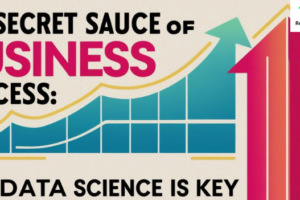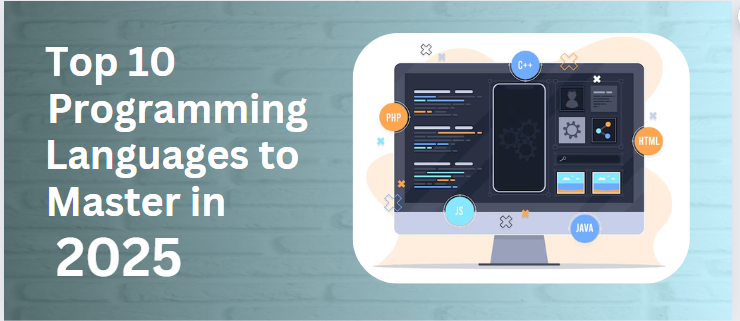
Top Programming Languages to Master in 2025 for IT Careers.
- Date September 12, 2024
The Future of IT: Top Programming Languages to Master in 2025
Top programming languages for IT jobs: The world of information technology (IT) is changing at a rapid speed, as are the tools and skills required to succeed in this dynamic industry. Knowing the correct programming languages is a critical skill for everyone working in IT. As we approach 2025, it’s crucial to consider “What are the top programming languages for IT jobs to master?” In this column, we’ll look at the programming languages that are influencing the future of IT, making them important for developers, engineers, and IT fans alike.
The Importance of Programming Languages in IT
Programming languages form the foundation of everything digital. Programming languages enable engineers to construct software that powers current technology, including web applications and complicated AI systems. Choosing the appropriate programming language can provide the groundwork for your career or next project. In 2025, the top programming languages for IT jobs will be more diverse than ever. The demand for specific languages vary according to trends, technical breakthroughs, and business needs.
Why does Learning new Programming Languages matters?
You might wonder if you need to learn new programming languages, especially if you’re already familiar with popular ones like Python or Java. The solution is simple: the technology industry is always changing. What is in demand now may not be relevant tomorrow. Top programming languages for IT jobs adapt to new difficulties, such as the advent of artificial intelligence, machine learning, data analytics, and blockchain technology. Being adaptive is critical to remaining competitive in the IT job market.
Now, let’s have a look at the top programming languages expected to dominate the IT market in 2025.
1. Python
Python is one of the most popular programming languages in the world, and with good reason. Various industries, including web development, data science, artificial intelligence, and machine learning, use this versatile language. Known for its simplicity and readability, it remains a top choice for developers, especially in 2025, thanks to sophisticated libraries and frameworks like TensorFlow and Django.
Reasons to choose JavaScript:
- Its straightforward syntax makes it an ideal starting point for anyone new to programming.
- This language is highly versatile, with applications in web development, data analysis, automation, AI, and machine learning.
- With a huge, active community, you’ll never run out of tutorials, resources, or help.
2. JavaScript
JavaScript is everywhere. As the foundation of web development, it’s nearly difficult to engage with the internet without encountering JavaScript in some form or another. In 2025, JavaScript is still an important programming language for creating dynamic websites, interactive applications, and even mobile apps.
Reasons to choose JavaScript:
- Web development: JavaScript is the backbone of modern web development, enabling developers to construct interactive and dynamic webpages.
- JavaScript operates in all modern browsers, and developers use its frameworks, such as React and Angular, to create sophisticated online apps.
- Growing ecosystem: With tools like Node.js, JavaScript is no longer just for front-end development. It can also be used for back-end development.
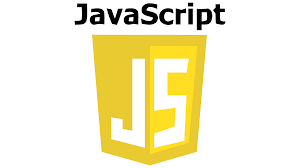
3. Rust
Rust has received a lot of attention in recent years and is quickly becoming a popular choice among developers. Its emphasis on safety, speed, and parallelism makes it ideal for system programming. Businesses that require high performance, such as finance, gaming, and cloud computing, are expected to drive Rust’s rising trend in 2025.
Reasons to learn Rust include:
- Memory safety: Rust protects against several common programming problems, including null pointer dereferencing and buffer overflows.
- Concurrency: Rust makes it simple to create secure, concurrent programs, which is critical for modern applications that require great performance.
- Rust has a thriving community, and its use is fast expanding in fields such as blockchain development and system-level programming.

4. Go (Golang)
Go, or Golang, is a computer language developed by Google. It has a straightforward syntax that makes it easy to learn, and it is well-known for its efficiency when dealing with concurrent processes.In 2025, Go is expected to become more popular, especially in cloud computing, microservices, and backend programming.
Reasons to know Golang:
- Concurrency: Go’s built-in support for concurrency makes it ideal for developing scalable systems.
- Cloud computing developers use Go to write many cloud-based applications and tools, making it an important language in the field.
- Fast compilation: Go is a compiled language, which means it runs faster than interpreted languages like Python.
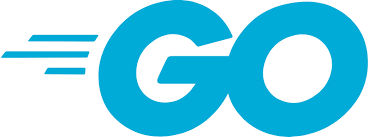
5. Kotlin
JetBrains developed Kotlin, which is now the preferred language for Android app development. In 2025, Kotlin remains a top programming language for mobile development. Google has officially supported Kotlin for Android development, thus more and more developers are using it to build mobile applications.
Reasons to learn Kotlin involve:
- If you want to create mobile apps, especially for Android, you must learn Kotlin.
- Interoperability: Kotlin is completely compatible with Java, allowing you to use it alongside Java in existing applications.
- Modern syntax: Kotlin’s syntax is more succinct and expressive than Java’s, requiring developers to write less boilerplate code.
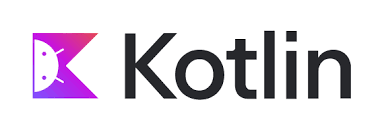
6. TypeScript
TypeScript is a superset of JavaScript that introduces optional static types. By 2025, developers are expected to increase the popularity of TypeScript due to its robust tooling and error-checking, which simplify large-scale application maintenance.
Reasons to Learn TypeScript:
- Error Detection: It allows developers to discover problems during development, resulting in more reliable and maintainable code.
- Scalability: TypeScript is excellent at managing large codebases, making it essential for enterprise-level applications.
- Compatibility: Since TypeScript is a superset of JavaScript, it seamlessly integrates with existing JavaScript modules and frameworks.
7. Swift
Swift is the preferred top programming language for iOS and macOS app development. Developed by Apple, Swift features a concise and expressive syntax, making it easy to use and maintain. In 2025, Swift will continue to be a crucial language for anyone looking to create apps for the Apple ecosystem.
Reasons to learn Swift include:
- Developers primarily use Swift to create applications for iPhones, iPads, and Macs.
- Swift outperforms many other programming languages due to its performance optimization.
- Its concise syntax ensures simplicity, making it easier to learn and maintain, even for new developers.
8. R
If you’re into data analysis, statistics, or scientific computing, R is the programming language for you. R has long been a staple in the data science community, and its popularity is expected to expand in 2025. With the rise of big data and the growing need for data-driven insights, R is still an essential tool for data scientists.
Reasons to learn R:
- Data scientists primarily use R for statistical computing and data analysis, making it ideal for their work.
- Researchers and academics frequently use R, so understanding it can open new opportunities.
- R has a large number of tools and libraries, making it simple to do sophisticated data analytic tasks.

9. SQL
SQL (Structured Query Language) remains a vital tool for anyone working with databases. Although it’s not a new programming language, SQL continues to be highly relevant in 2025 as the demand for data-driven applications rises.
Reasons to Learn SQL:
- As the standard language for managing relational databases, SQL is essential for backend developers, data analysts, and database administrators.
- Widely used across industries, SQL plays a key role in client data management, transaction processing, and report generation.
- Compared to other programming languages, SQL is relatively easy to learn and is applicable in a broad range of business sectors.
10. Julia
Julia is a new programming language that is gaining popularity, notably in scientific computing and data processing. It is noted for its speed and performance, making it a good choice for applications that require massive datasets or high-throughput processing.
Why you should learn Julia:
- Julia is developed for high-performance numerical and scientific computation, hence it outperforms many other languages in these domains.
- Despite its capability, Julia’s syntax is straightforward and clear, making it accessible to novice users.
- Julia’s popularity is expected to grow in 2024 as more sectors seek to leverage the power of data and machine learning.

Conclusion
In the fast-paced world of information technology, staying current with your abilities is critical. In 2025, understanding the correct programming languages can lead to new prospects in industries such as web development, data science, AI, mobile app development, and others. Whether you’re just getting started or want to expand your skill set, the top programming languages for IT jobs that we’ve covered—Python, JavaScript, Rust, Go, Kotlin, TypeScript, Swift, R, SQL, and Julia—will help you stay ahead of the curve in this ever-changing profession.
Learning these programming languages will ensure that you remain competitive and prepared for the future of IT.
You may also like

The Ultimate Guide to Mastering Data Analysis in 2025
